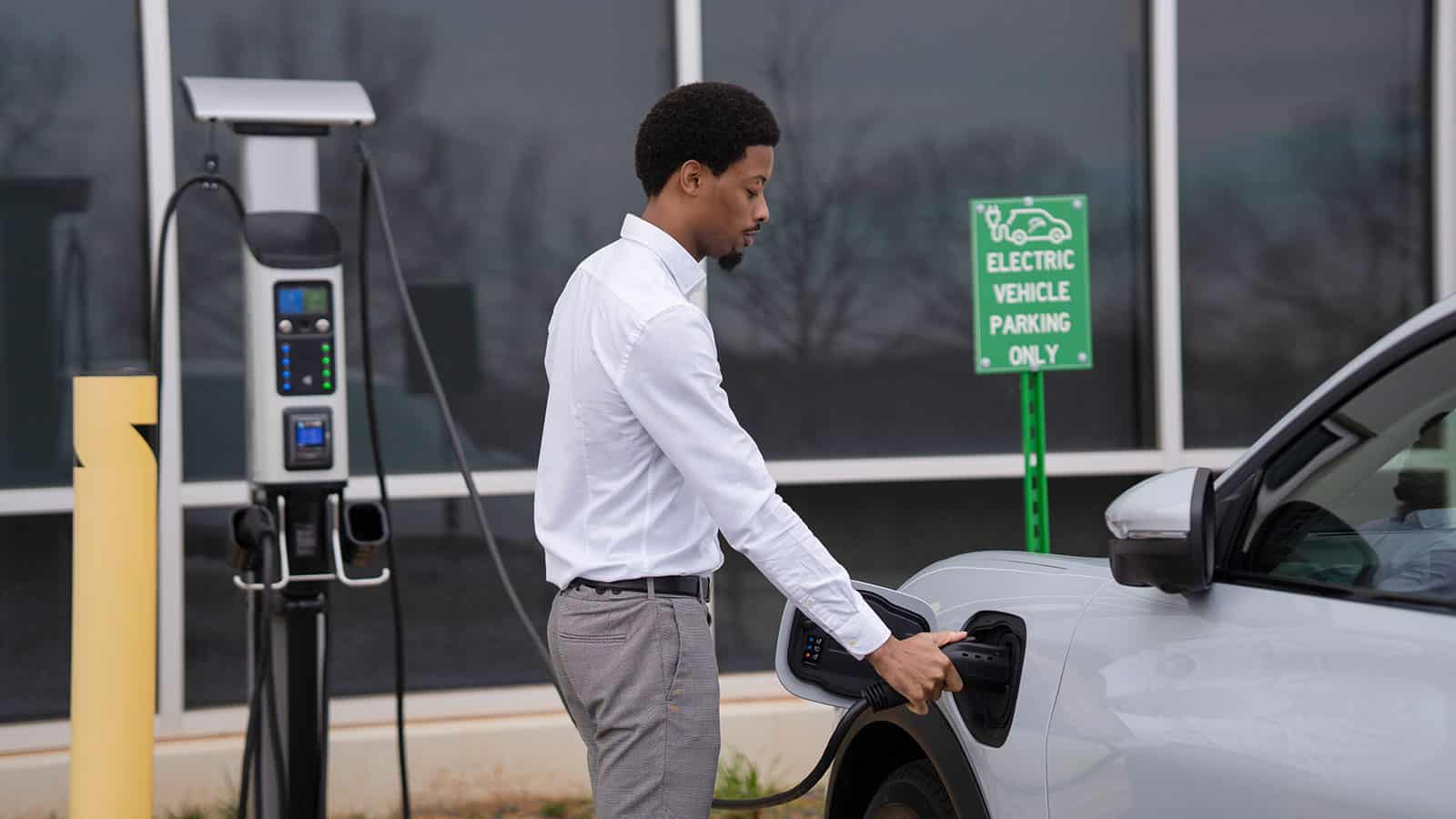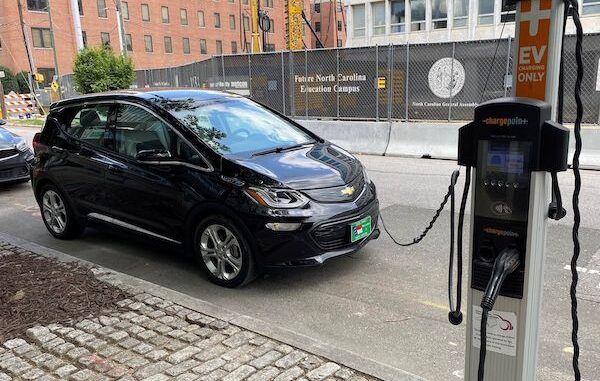Leading EV Charging News: Key Updates on Facilities and Technology

Current Improvements in Fast-Charging Modern Technology

Additionally, advancements in battery modern technology, consisting of boosted thermal management systems and greater power thickness batteries, enhance fast-charging capacities. These advancements reduce the danger of battery destruction throughout fast charging, ensuring durability and performance for EV owners.
Furthermore, the combination of wise billing solutions is improving individual experience, allowing real-time surveillance and vibrant rates models. EV Charging news. This flexibility enables motorists to maximize billing times and prices based upon grid demand
As car manufacturers continue to purchase fast-charging networks, the cooperation in between industry stakeholders is critical. Collaborations between charging terminal companies and automotive producers are leading the way for comprehensive insurance coverage, eventually cultivating a more durable EV environment. These improvements are essential in supporting the transition to sustainable transport.
Federal Government Initiatives for Charging Development
Government initiatives play a vital role in the growth of electric lorry (EV) charging framework, assisting in the shift to sustainable transportation. Various government and state programs are being applied to boost charging ease of access, reduce the monetary concern on consumers, and advertise the fostering of electrical vehicles.
Notably, the united state federal government has actually allocated considerable financing via the Infrastructure Investment and Jobs Act, which allocates $7.5 billion for EV billing network development across the country. This funding is targeted at releasing thousands of new charging stations, especially in underserved locations, therefore addressing array stress and anxiety among prospective EV customers.
Furthermore, various states are passing regulations to simplify the allowing procedure for billing terminal installments, which is critical for speeding up implementation. Motivations such as tax obligation credit ratings and discounts for both customers and companies are additionally being introduced to urge the installation of charging framework.
In addition, public-private partnerships are progressively becoming a focus, leveraging personal investment to enhance federal government funding. These efforts underscore a joint technique essential for building a comprehensive and efficient EV charging network, eventually adding to a greener and more lasting future.
Ingenious Battery Solutions Enhancing Effectiveness
Transforming the landscape of electric vehicle (EV) technology, innovative battery services are significantly improving effectiveness and efficiency. Advances in battery chemistry, specifically with lithium-sulfur and solid-state batteries, are resulting in boosted power thickness, which permits longer ranges and faster billing times. These brand-new battery kinds have the possible to surpass typical lithium-ion batteries by providing higher abilities while lowering weight, thus improving overall automobile performance.
In addition, developments in battery monitoring systems (BMS) are enhancing useful reference energy use and prolonging battery life expectancy. Intelligent algorithms monitor battery wellness and efficiency, enabling real-time adjustments to billing and releasing procedures. This not just enhances the performance of the battery however additionally ensures an extra trusted and sustainable power source for EVs.
Furthermore, the integration of recycling innovations is resolving the environmental impact of battery manufacturing and disposal. Advancements in second-life applications for EV batteries are promoting their use in power storage space systems, adding to a circular economy.
As these cutting-edge battery solutions remain to progress, they assure to change the EV market, making electrical automobiles a lot more appealing and accessible to a broader audience while sustaining worldwide sustainability goals.

Collaboration Between Automakers and Charging Networks
Identifying the vital need for a robust charging framework, automakers are significantly collaborating with billing network service providers to boost the EV possession experience (EV Charging news). These collaborations intend to create a seamless billing ecosystem that benefits consumers and supports the shift to electrical automobiles
Major auto brand names are signing up with forces with well-known charging networks to increase their charging station insurance coverage, making sure vehicle drivers have access to trustworthy and convenient charging alternatives. For instance, collaborations with networks like ChargePoint and Electrify America enable automakers to incorporate billing solutions directly right into their cars' navigating systems, leading customers to the nearby terminals and providing real-time accessibility updates.
Furthermore, these cooperations frequently lead to the advancement of fast-charging modern technologies that dramatically decrease the moment required to reenergize an EV. By merging sources and proficiency, automakers and charging networks can innovate quicker, producing solutions that fulfill the expanding demand for electrical flexibility.
In addition, joint campaigns might also result in more standard billing methods, which can ease customer complication and promote more comprehensive EV adoption. Overall, these calculated alliances are critical in building a straightforward and reliable this page billing infrastructure that meets the demands of an increasing electric lorry market.
Challenges Dealing With EV Billing Facilities
As the electric lorry market remains to expand, several difficulties are appearing that prevent the development of an extensive billing facilities. One of the primary challenges is the insufficient variety of billing terminals, especially in underserved and country city locations. This void produces variety stress and anxiety among potential EV buyers, deterring them from making the button.
Additionally, the lack of standardization in find billing innovation makes complex the facilities landscape. Variants in plug kinds and charging speeds can create confusion for users and raise operational intricacies for billing network operators. Additionally, the assimilation of charging terminals right into existing electric grids poses considerable difficulties. Lots of regions deal with capacity constraints, requiring considerable investments in grid upgrades to suit increased demand.
Another pressing issue is the high cost connected with the installment and upkeep of charging terminals, which can be a barrier for both personal services and public entities. Ultimately, regulatory obstacles and zoning restrictions can delay the implementation of billing framework, impeding progress in expanding important solutions. Dealing with these obstacles will certainly be important for promoting a robust EV environment that supports the transition to sustainable transport.
Verdict
In conclusion, the continuous improvements in EV billing innovation, supported by substantial federal government campaigns and innovative battery options, are critical for the development and performance of electrical automobile facilities. Partnerships between automakers and billing companies additionally improve terminal coverage, dealing with the expanding need for accessible billing alternatives. Despite challenges that linger within the EV charging landscape, these growths symbolize a favorable trajectory towards a much more effective and lasting electrical car environment.
Innovations in charging infrastructure have led to the advancement of ultra-fast battery chargers qualified of providing up to 350 kW of power, substantially lowering charging times. Variations in plug kinds and charging rates can create complication for users and increase functional intricacies for billing network drivers.In final thought, the ongoing developments in EV charging innovation, supported by substantial federal government campaigns and cutting-edge battery services, are essential for the expansion and performance of electrical automobile framework. Cooperations in between car manufacturers and billing suppliers additionally enhance station coverage, resolving the expanding need for obtainable billing alternatives. Despite obstacles that persist within the EV billing landscape, these growths indicate a positive trajectory towards an extra efficient and lasting electrical automobile ecological community.